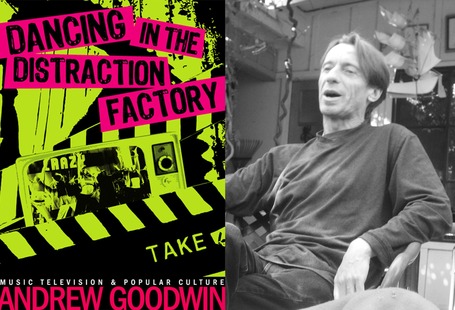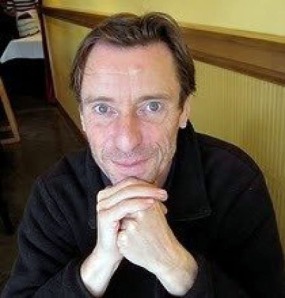 It’s January 14, 2012, and Candlestick Park is rocking for the San Francisco 49ers first playoff game in 9 years. Despite having home field advantage for the division playoff round, San Francisco is the underdog against the high octane New Orleans Saints.
It’s January 14, 2012, and Candlestick Park is rocking for the San Francisco 49ers first playoff game in 9 years. Despite having home field advantage for the division playoff round, San Francisco is the underdog against the high octane New Orleans Saints.
The team seems poised for their first trip to the NFC Championship game since 1995. The 49ers were unable to hold on to the lead, however, and found themselves down, 32-29, in the waning moments of the fourth quarter. With just nine seconds remaining, quarterback Alex Smith rifled a pass right to tight end Vernon Davis for a game winning touchdown. As the crowd of nearly 70,000 went into frenzy, and Davis shed tears of joy, the 49ers had given Candlestick Park perhaps its one last shining moment.
Three months later, Candlestick Park is empty. It’s the mid afternoon, and the light rain makes Candlestick even bleaker than usual. A brief glimpse of the notorious Candlestick winds helps make the air even colder. The baseball season has just begun, but there is no roar from the bleachers. The stadium that once housed Juan Marichal and Willie Mays has been permanently silent during spring since 2000.
That was the year the San Francisco Giants moved to the state-of-the art AT&T Park. It was the vibrant AT&T Park that saw the Giants capture their first World Series since moving to San Francisco. While the area around AT&T has become a hotpot for nightlife, Candlestick is saddled amongst the urban decay of Hunter’s Point.
In its 52 year existence, Candlestick Park has been witness to some of the greatest moments in sports history. It was the home stadium of baseball greats from Willie Mays to Barry Bonds. It housed Joe Montana and Steve Young, and was the site of the most famous catch in NFL history. Beyond sports, it became a cultural landmark, and welcomed the Beatles for their final full concert.
The “Stick”, as its affectionately known, lost much of its importance when the San Francisco Giants left twelve seasons ago. Now, with the San Francisco 49ers set to leave in 2014 for Santa Clara, Candlestick faces permanent irrelevancy.
While Candlestick Park has been witness to many defining sports moments, the “Stick” was never an architectural land mark. The park was opened in 1960 to accommodate the Giants, who had moved to San Francisco from New York just two years earlier. The first pitch ever thrown at the stadium came from the arm of then-vice president Richard M. Nixon.
“It was built at a time when people didn’t care that much about making something feel really good,” said San Francisco Chronicle urban design critic John King. “They just wanted something big and new. It never had a lot of charm to it.”
In its first year of operation, Candlestick temporarily housed the Oakland Raiders of the upstart AFL, while the 49ers remained at Kezar Stadium. However the stadium’s first monumental event was not a sporting event at all. On Aug. 29, 1966, Candlestick Park welcomed the Beatles. It would be the legendary band’s last live commercial concert. The band ripped through an 11 song set list in 35 minutes before saying goodbye for good.
It didn’t take long for the Candlestick to gain notoriety for its most famous feature: the ferocious winds. The park hosted the 1961 All-Star game, in which pitcher Stu Miller was swept off the mound by a mammoth gust of wind. The wind didn’t affect just the players; it left fans unbearably cold atop the Candlestick bleachers. Starting in 1983, the stadium began handing out the “Croix de Candlestick”, a pin that was awarded to any spectator who managed to stay during the extra innings of a Giants night game.
“The Croix de Candlestick symbolized that you were a true Giants fan,” said John Quebedeaux, a fan who’s lived in San Francisco for upwards of 30 years.
In 1971, the 49ers finally moved out of Kezar and into Candlestick, but not before the city spent $16 million to make the Stick more compatible for football. While their first season was a success, culminating in an appearance in the NFC title game, the 49ers spent much of the 1970’s near the bottom of the NFC standings.
Their fortunes didn’t change until they drafted a young quarterback from Notre Dame named Joe Montana in the third round of the 1979 NFL draft. In 1981, Montana led the 49ers to a NFC championship bout against the Dallas Cowboys at Candlestick. With the 49ers trailing late in the game, Montana threw a desperate heave near the back of end zone. Tight end Dwight Clark leaped up and made an improbable touchdown grab that will forever go down in NFL lore as simply “The Catch”.
“A good friend of mine was there and said you could feel the ground shake and the upper deck was moving,” said Ted Johnson, former beat writer for the San Francisco 49ers.
“That’s what happens when 60,000 people start jumping at the same time.”
“That was the game that really put the 49ers on the map,” said Quebedeaux.
For the next decade and a half, the 49ers would become the dominant superpower
of the NFL, winning 5 Super Bowl championships and making Candlestick the center of the professional football world. During this time period, Candlestick also was center stage for one of the most terrifying moments in San Francisco history. On Oct.17, 1989, the San Francisco Giants were set to face the Oakland Athletics in Game 3 of the World Series. At 5:04 local time, the ground began to shake.
“I was covering the World Series for the news section,” said longtime San Francisco Chronicle writer Carl Nolte. “The guy sitting next to me, he looked at me, his eyes got real big, and he said, ‘Earthquake!’. Some people were saying that the Bay Bridge was falling down. I said ‘Are you kidding? Get out of here.’ Well, we found out it was true. And we could see the Marina burning, and we thought that we better get out of here.”
The Loma Prieta earthquake would ultimately result in 63 deaths. The Giants would eventually lose the World Series, which was postponed 10 days after the tragedy.
In recent years, the venerable park has become more notable for its dilapidated state. Last December, the lights went out at Candlestick right before the 49er’s Monday Night Football game against the Pittsburgh Steelers, delaying the start of the game for over 30 minutes.
“Last year I saw Cal play Fresno State, and I thought what a dump this is,” says Nolte of his last visit to Candlestick. “Hard to get to, bad neighborhood, all kinds of stuff.”
Rory Brown, Bleacher Report Director of Content Operations and a Mountain View native, also isn’t impressed by the Stick’s current structure.
“It’s almost better just to watch the 49ers games on television,” he said. In addition, the out of the way location of Candlestick made traveling to the park a hassle for fans and media alike.
“Covering the 49ers was good work but after a while the most important thing in your arsenal was not the tape recorder or note book, or even the press credential. It was the parking pass,” said Johnson. “It’s such a b— to get in and out of the parking lot.”
At one point, it seemed almost unfathomable that the 49ers would leave San Francisco to build a new stadium. In 1997, San Francisco voters approved $100 million dollars in city spending to build a new stadium and shopping mall at Candlestick Point. However, the plan failed to gain any traction for several years.
The pressure heightened for a new stadium to be built in 2006, as then mayor Gavin Newsom wanted it to be the centerpiece of San Francisco’s 2016 Olympic bid. However, with concerns over the viability of Candlestick Point and a lack of other options in San Francisco, the team switched its focus to Santa Clara.
“There was a sense of inevitability that the 49ers would stay in San Francisco,” King said. “Then, all the sudden the team announced they were looking at Santa Clara and it caught everybody by surprise.” The San Francisco 49ers broke ground on their new stadium on April 19, 2012, with hopes to complete it in time for the 2014 NFL season. Conservative estimates put its cost at $1.2 billion.
The 49ers impending departure will be particularly tough for the residents of Hunters Point. Legislators had hoped that a new stadium would help revitalize the struggling Hunter’s Point community.
“People saw how AT&T Park really brought the Mission Bay district to life,” King said. “You’d hope that would happen to Hunters Point too.”
Regardless, Lennar Urban, which is overseeing the redevelopment of the area, is trudging along, planning an ambitious $400 million overhaul of the Hunters View housing project. It’s this plan that will put the final coffin in Candlestick Park; Kofi Bonner, the President of Lennar Urban, told the San Francisco Examiner that his company will start negotiating with the city to demolish Candlestick once the 49ers leave town.
Despite their love-hate relationship with Candlestick Park, many San Franciscans will miss having their very own football team. “The 49ers leaving San Francisco is a tragedy, disaster, awful,” said Nolte. “The 49ers are the original homegrown, major league team.”
“I think losing a football team makes San Francisco a little less diverse,” John King said. “The city is so known for being a certain kind of way, a bastion of left-wing politics, and the 49ers are an antidote to that.”
“San Francisco may not be one of the greatest sports towns in terms of having a large, passionate fan base, but there are a good number of committed fans that will be sad to see it go,” said Rory Brown.
However, all hope is not lost for local fans.
“For me, part of the experience of being a fan is to be able to be with my friends and family and have a great time,” said Meena Naik, a second generation Indian-American whose family resides in the Bay Area. “I’ll still be able to do that in Santa Clara.”
After all, sports, as much as anything, is about creating memories. Candlestick, the old, graying building that it is, has created many indelible images in its lifetime; 49ers fans can only hope the team’s new home will create a history as rich as the Stick.







